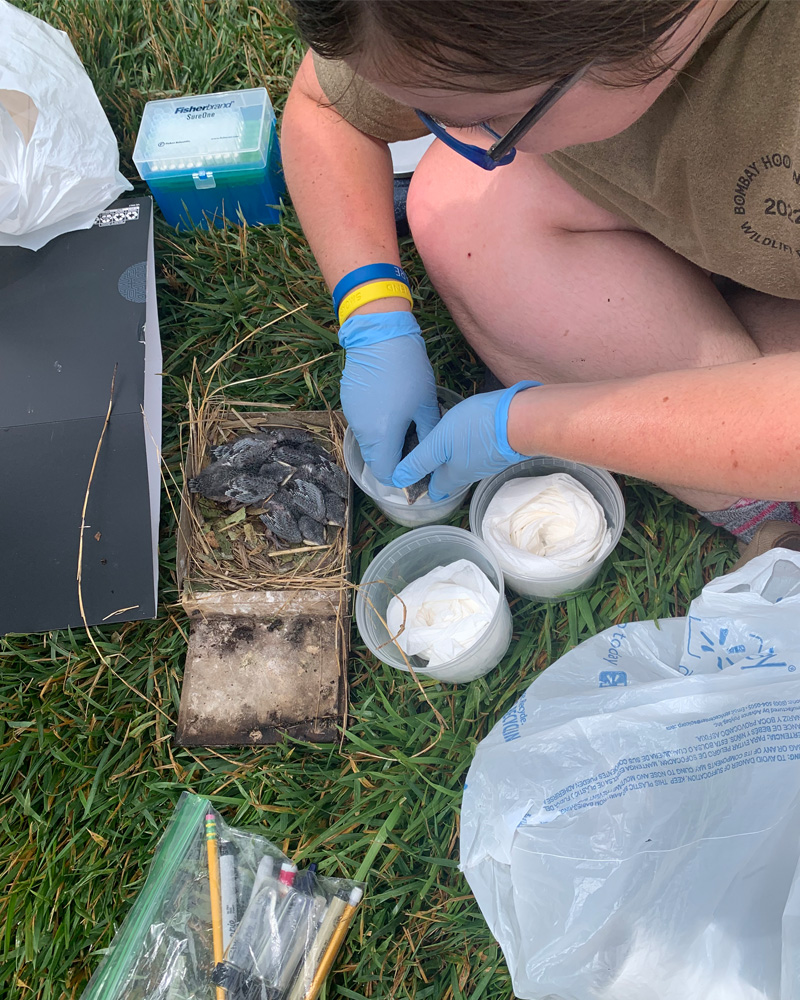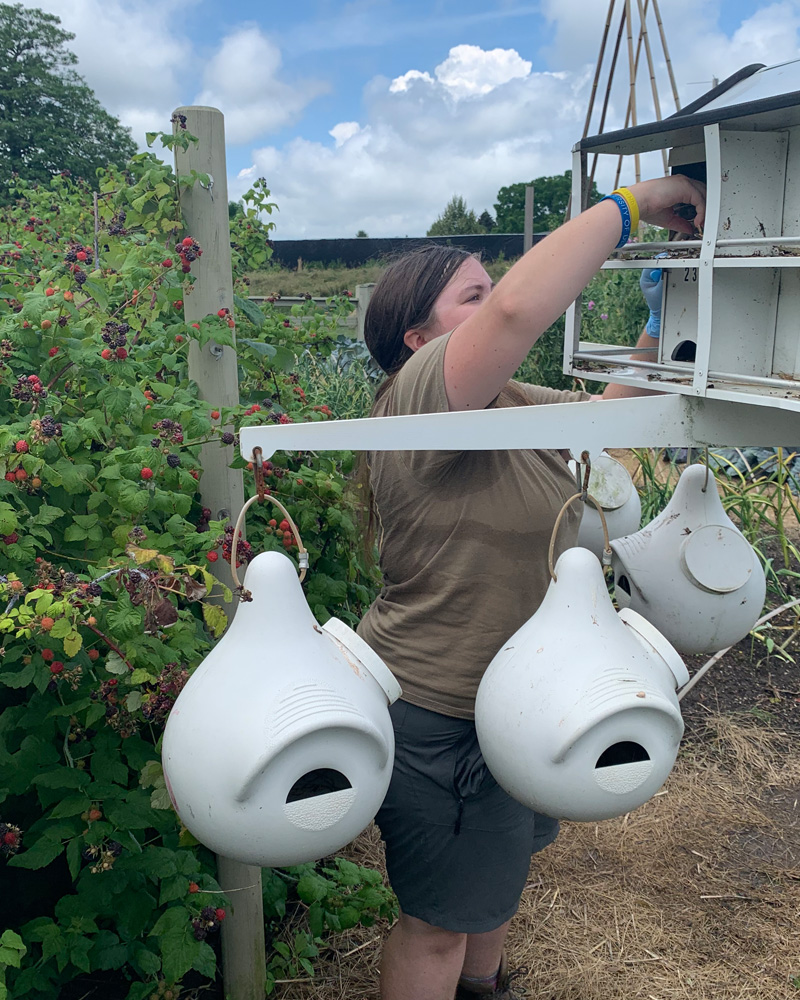

Quantifying purple martin diet: youtube.com/watch?v=gHLKDbWZYA4
Quantifying purple martin diet
Photos courtesy of Claire Bernard | Photo illustration and video by Jeffrey C. Chase April 01, 2024
Undergraduate researcher studies how diet of purple martin nestlings affects growth
People have long sought to attract purple martins, which are known for their aerial acrobatics, tolerance of humans and pleasant songs. Native Americans hung hollow gourds in trees or on poles to encourage nesting in their villages, and when European settlers arrived in North America, they also adopted the custom of hanging gourds to attract martins.
Today, purple martins in the east are entirely dependent on humans for supplying them with nesting sites in specially-designed houses or hollow gourds. If humans were to stop supplying martins with homes, they would likely disappear from eastern North America.
Populations of this migratory songbird have been declining for the past century, likely due to the release and spread of European starlings and house sparrows in North America, which compete with martins for nest cavities. They’re also obligate aerial insectivores — meaning they only eat flying insects — so they’re particularly vulnerable to changes in the environment.
Claire Bernard, an honors insect ecology and conservation and wildlife ecology and conservation double major at the University of Delaware and Summer Scholar in UD’s Undergraduate Research Program, has been quantifying purple martin nestlings’ diets and researching how diet affects their growth. Bernard is conducting the research for her senior thesis project, and she received funding from the Delaware Audubon Society.
“I wanted to focus on something with bird diet so that way I could mesh two of my majors together — wildlife and insects,” said Bernard, who worked with Jeffrey Buler and Vincenzo Ellis, professors in the Department of Entomology and Wildlife Ecology. “I found it really interesting. I've always loved working with baby birds — I've done that in both a research setting and a veterinary setting — so to be able to mix that with my interest in insects, it was awesome.”

Purple martins will often return to the same site to nest year after year, so finding three nesting sites for Bernard to compare — Longwood Gardens, Curtis Mill Park in Newark and Bucktoe Creek Preserve in Avondale, Pennsylvania — was relatively easy.
Bernard took fecal samples and measurements of the purple martin nestlings at each location three times throughout the nestling stage, which typically lasts around 24 to 28 days. Once the fecal samples were analyzed, she was able to examine the diversity of insects the birds at each site consumed and then compare the growth rates of the birds at the three locations.
Bucktoe Creek and Curtis Mill have a lot more native plants and a more natural landscape compared to Longwood Gardens, which is known for its plants from around the world, so Bernard predicted that the purple martin growth rate there would be greater than at Longwood Gardens.
“Those native plants, through the insects that they support, also then go to support the birds, including purple martins,” she said.
Bernard isn’t new to fieldwork and research, but the purple martin study was her first time managing a research project. She said it was a great learning experience and was more trial and error than she anticipated.

“Being able to see how the research process works from the standpoint of someone who’s actually designing the experiment rather than the standpoint of an assistant, there were so many things I didn’t even realize I needed to consider,” she said.
For example, she quickly learned that the nestlings couldn’t be out in the sun for too long when she measured them, so she needed to cover them with a box to make sure they were in the shade. She also learned that once she disturbed one of the nestlings, they would all poop, contaminating the other fecal samples. To fix that issue, she would put them each on their own makeshift nest made, fittingly, out of toilet paper.
“A lot of the wildlife field research is making things out of what you have,” she said. “It varies so much so it's hard to have a standard procedure for even the same bird. It’s a lot of figuring it out as you go.”
After graduating this spring, she plans to take a gap year or two before graduate school so she can learn about what kind of career path she’d like to take. But as long as she’s working with birds, she said, she’ll be happy.
“This showed me that I love working in this sort of environment,” she said. “I love working with nestlings, and I loved being able to see what they're eating and be able to connect the results to other issues related to bird conservation.”
Contact Us
Have a UDaily story idea?
Contact us at ocm@udel.edu
Members of the press
Contact us at 302-831-NEWS or visit the Media Relations website

